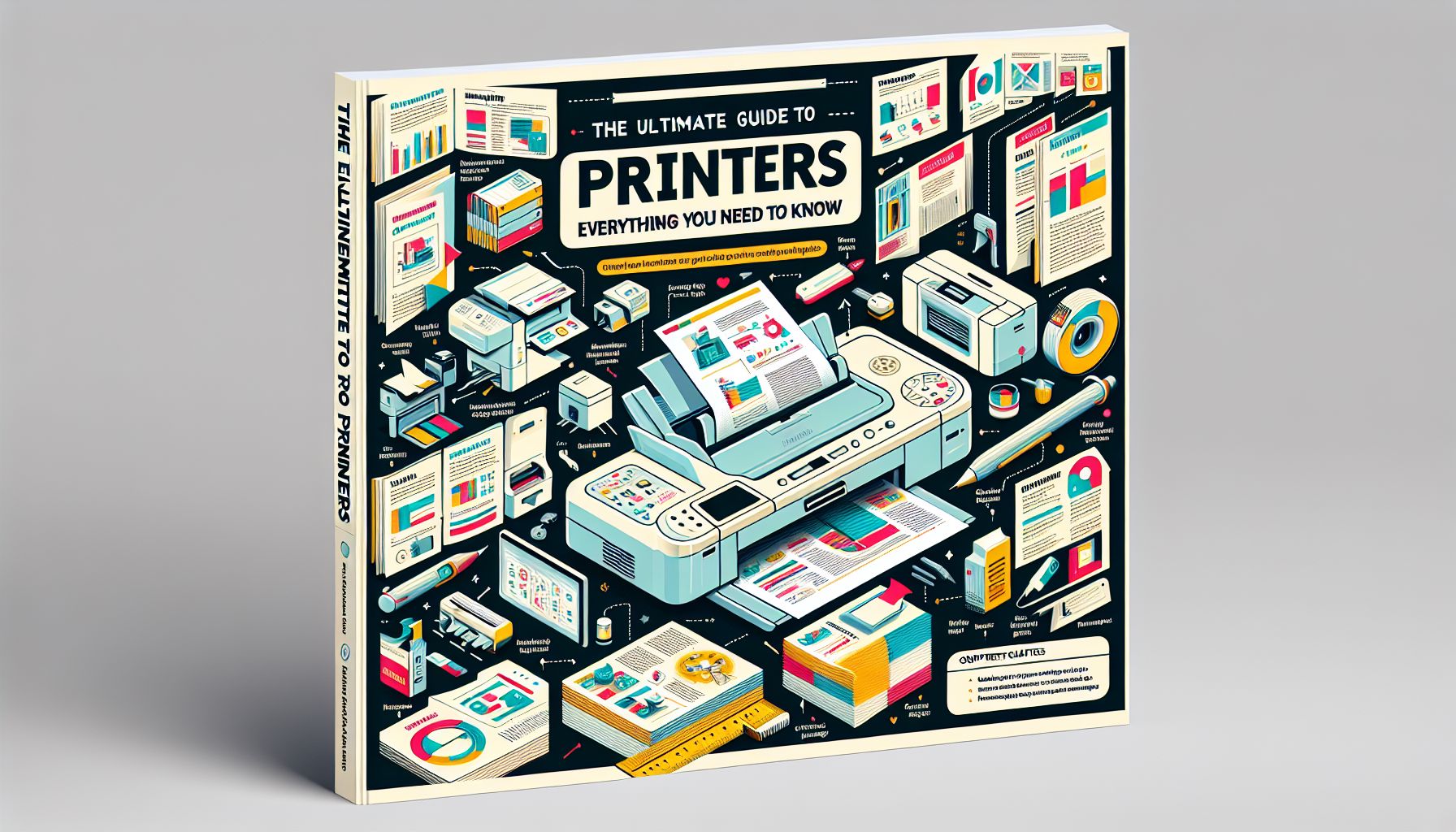In today’s digital age, printers are still a staple in most homes and offices. Whether it’s for printing out important documents, school assignments, or family photos, having a reliable printer is essential. However, with so many options available on the market, choosing the right printer can be overwhelming. From inkjet to laser, wireless connectivity to all-in-one functionality, there are countless factors to consider when purchasing a printer. In this comprehensive guide, we will cover everything you need to know about printers to help you make an informed decision.
Types of Printers
There are several types of printers available, each with its own set of features and benefits. The most common types of printers are inkjet printers and laser printers.
Inkjet Printers
Inkjet printers are popular among consumers for their affordability and versatility. These printers use liquid ink that is sprayed onto the paper to create images and text. Inkjet printers are ideal for producing high-quality color prints and are suitable for home use or small offices. They are also relatively compact in size, making them a great option for those with limited space.
Laser Printers
Laser printers use toner cartridges and a laser to produce images and text on paper. They are known for their fast printing speeds and high-quality output. Laser printers are typically more expensive than inkjet printers but are more cost-effective in the long run, as toner cartridges are more efficient than ink cartridges. Laser printers are well-suited for high-volume printing in offices or businesses.
Printer Features to Consider
When shopping for a printer, there are several key features to consider to ensure that you choose the right one for your needs.
Print Speed
Print speed is an important factor to consider, especially if you frequently need to print large documents. For home use, a print speed of around 10 pages per minute (ppm) for black and white prints and 5 ppm for color prints is sufficient. However, for office use, you may want to opt for a printer with higher print speeds to increase efficiency.
Connectivity Options
Modern printers offer a variety of connectivity options, including USB, Wi-Fi, Bluetooth, and cloud printing. Wireless connectivity is particularly convenient, as it allows you to print from multiple devices without having to connect directly to the printer. Some printers also offer NFC (Near Field Communication) and mobile printing capabilities for added convenience.
All-in-One Functionality
All-in-one printers, also known as multifunction printers, combine printing, scanning, copying, and faxing capabilities in a single device. This is a convenient option for those who need to perform various tasks without the need for separate devices. All-in-one printers are available in both inkjet and laser models and are suitable for home offices or small businesses.
Duplex Printing
Duplex printing, also known as double-sided printing, allows you to print on both sides of the paper automatically. This feature can help reduce paper waste and save money on printing costs. While most printers offer duplex printing as an option, some models come with automatic duplex printing, which eliminates the need to manually flip the paper.
Print Quality
Print quality is an important consideration when choosing a printer, especially if you need to print documents with fine details or high-resolution images. Inkjet printers are known for their superior color accuracy and photo printing capabilities, while laser printers excel at producing sharp text and graphics. It’s essential to consider the type of prints you will be producing to determine which printer offers the best print quality for your needs.
Printer Maintenance and Care
Proper maintenance and care are essential to ensure that your printer continues to perform at its best. Here are some tips to help you keep your printer in top condition:
-
Regular Cleaning: Dust and debris can accumulate inside your printer, leading to poor print quality and paper jams. Be sure to clean your printer regularly, following the manufacturer’s guidelines.
-
Use Quality Paper: Using low-quality paper can cause problems such as paper jams and ink smudges. Opt for high-quality paper that is compatible with your printer for optimal results.
-
Replace Ink/Toner Cartridges: Keeping your printer stocked with ink or toner is crucial for maintaining print quality. Be sure to replace cartridges when they run out to prevent damage to your printer.
-
Update Firmware: Check for firmware updates for your printer regularly to ensure that it is running the latest software version. Firmware updates can improve printer performance and fix bugs or issues.
-
Professional Maintenance: If you encounter persistent issues with your printer, consider seeking professional maintenance or repairs. Trying to fix complex problems yourself can result in further damage to your printer.
By following these maintenance tips, you can extend the life of your printer and ensure that it continues to produce high-quality prints for years to come.
Conclusion
Printers are a valuable tool for both personal and professional use, making it essential to choose the right printer for your needs. By considering factors such as printer type, features, and maintenance, you can make an informed decision that will meet your printing requirements. Whether you opt for an inkjet printer for vibrant color prints or a laser printer for fast, high-quality output, there is a printer available to suit every need and budget. With the right printer by your side, you can print with confidence and convenience.


